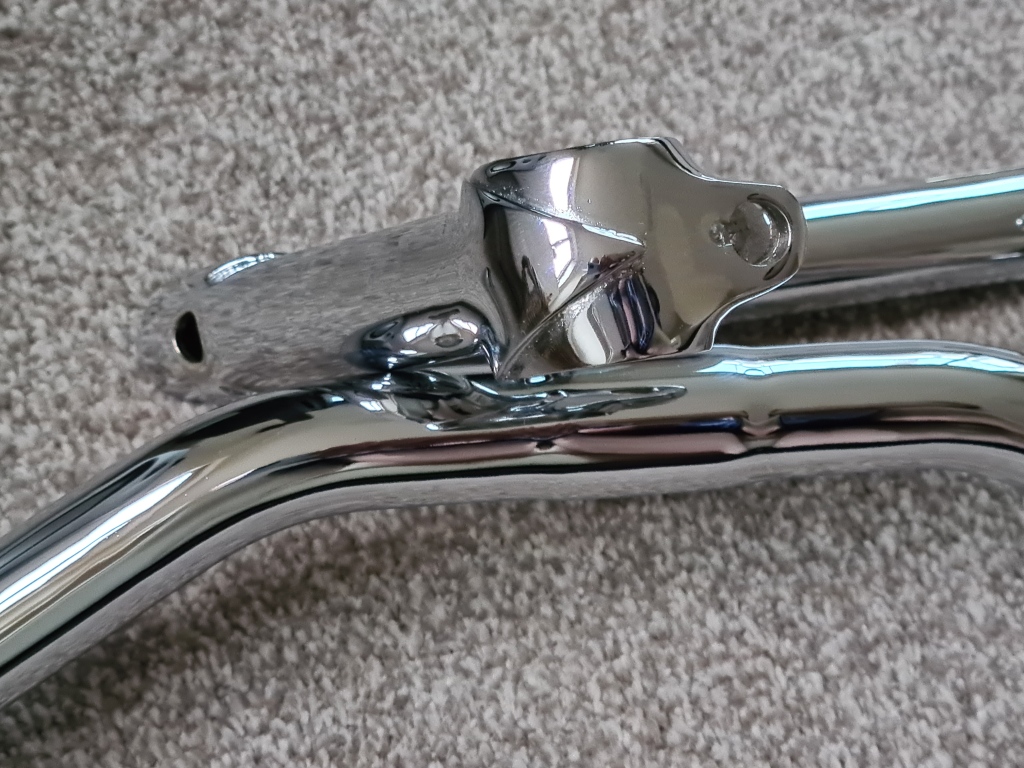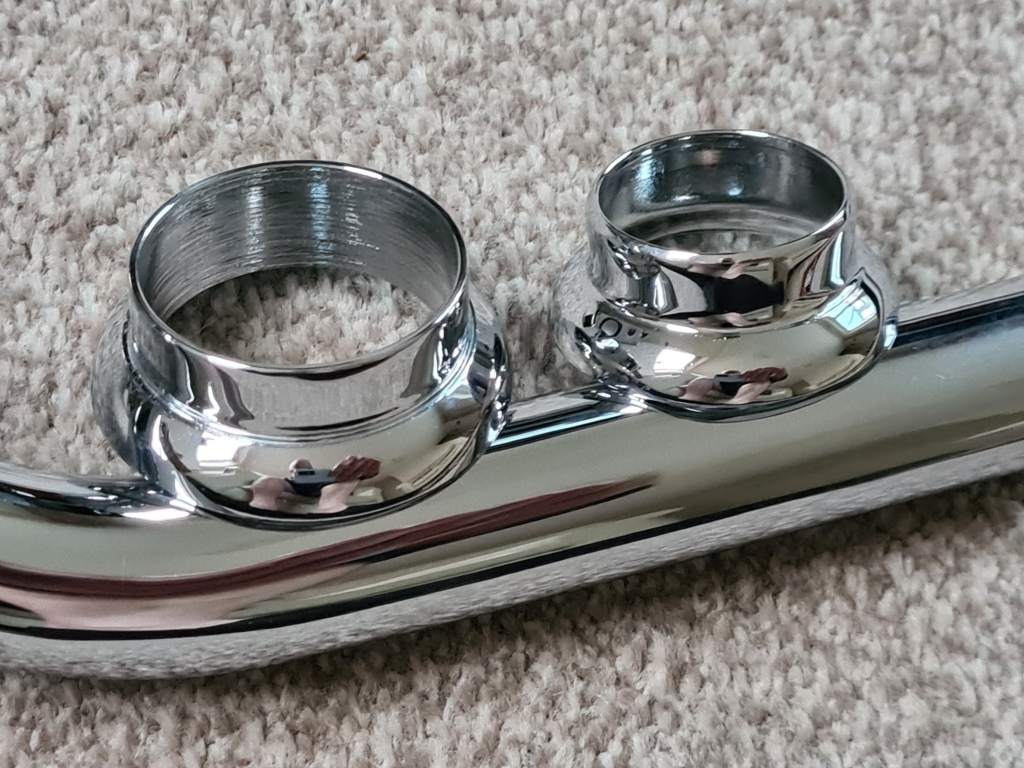Sometimes an exciting box arrives in the post (well, FedEx in this case). Inside were four parts from a 1964 Moulton Speed that can’t easily be replaced, nor are better ones ever seen for sale. So, at some expense, these had been off to Chromefix in Birmingham to be stripped, polished and replated.


Probably better than when they were new; the chrome has a very “liquid” appearance and they are incredibly smooth.
Chrome plating isn’t as simple as throwing steel items into an electroplating bath. What you see is the top layer of chromium metal, which is mere microns thick. Beneath this is a fairly thick layer of nickel plating and, beneath that, copper. All of this is necessary to achieve good adhesion, perfect smoothness, and corrosion resistance.
In itself, three-layer chrome plating still wouldn’t be all that expensive, but the steel underneath it all needs to be polished by hand using abrasives to remove any pitting or scratching that would show on the final finish. Your rusty chrome items will have a lot of pitting to the base steel. All the old plating needs to be chemically and electrolytically stripped before a Brummie metal polisher (it is an actual job, and they’ve been doing it for hundreds of years) removes all the imperfections on a grinder or polishing wheel, then it goes through the 3-layer plating process. When you know that, and when you appreciate the toxicity of some of the chemical baths involved, it doesn’t seem quite such bad value.
So why are new chromed steel items as cheap as chips? Well, there is no pitting or scratching on a newly-made item straight from the foundry, so no polishing is needed. There’s no old plating to strip first, and standards aren’t as high as they are for one-off commissions like this. The original Moulton chrome varies depending on who did it; TDC headsets hold up pretty well (although my cups needed doing, as you can see), really good Nicklin chainsets are easy to find after 60 years, but it is rare to see good chrome mudguards, bars, rims or stems. Modern chrome done in the Far East probably doesn’t have the 3-layer plating and won’t last long at all. Things that are still steel on new bikes, like headset brake hangers and tracknuts, will look terrible after one winter on British roads, unless you smear on a barrier layer of vaseline or linseed oil/beeswax mixture.
The following rule still applies, though: rechroming is expensive. If you can find new parts (fulcrum clips, nuts and bolts, etc) or better-condition used parts, that should be your first option. It’s always cheaper, and you don’t have to pay postage both ways!
